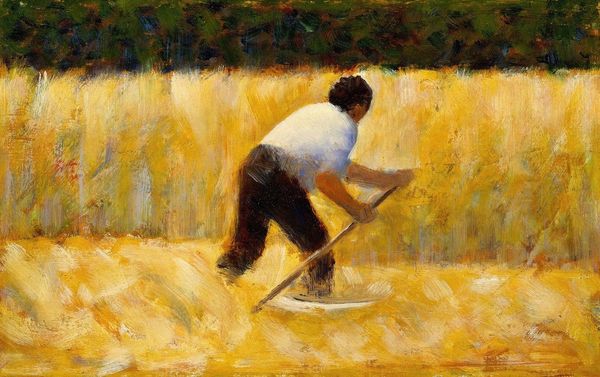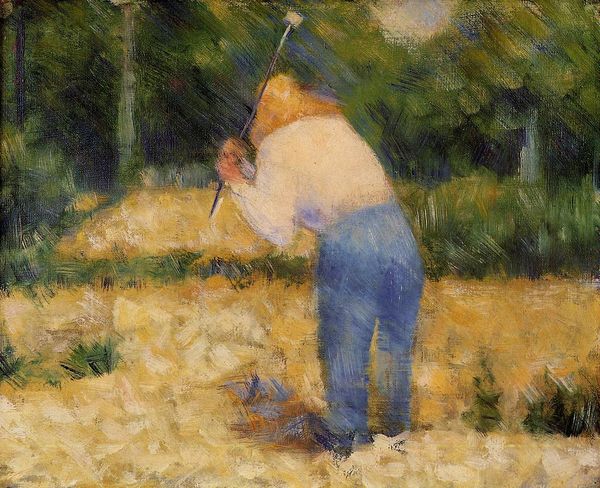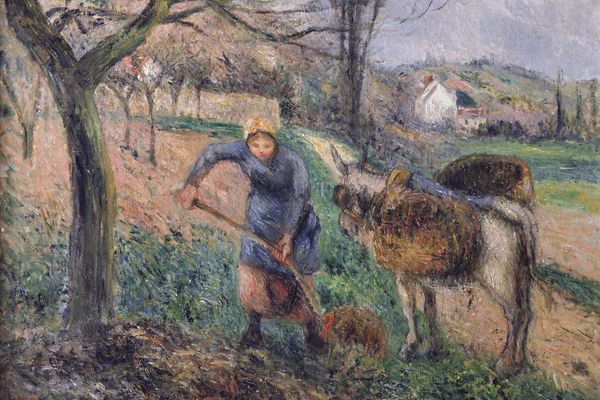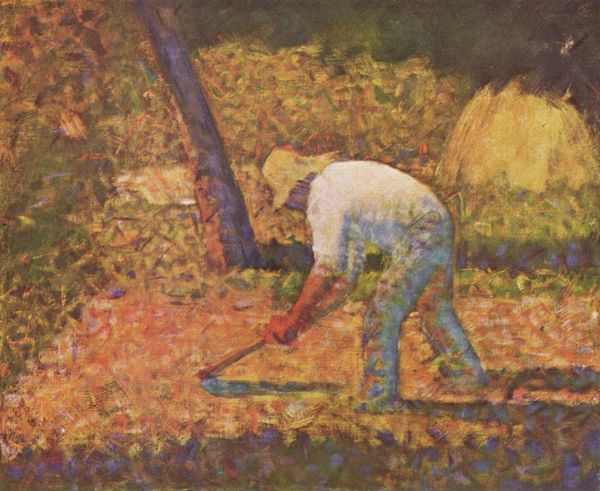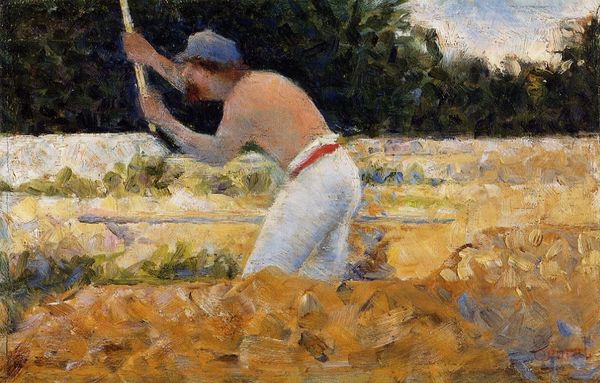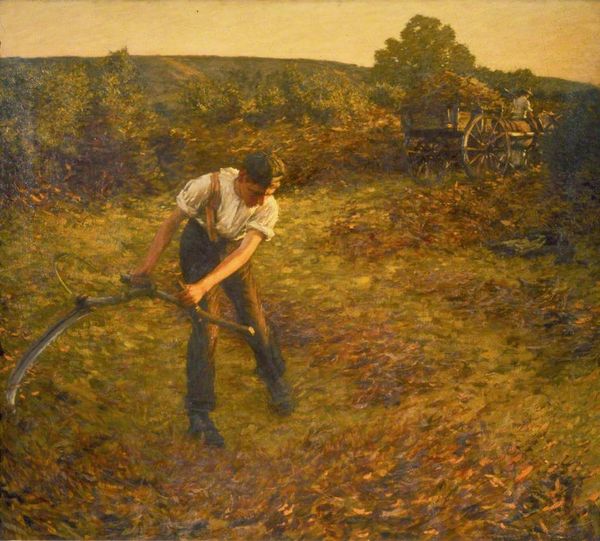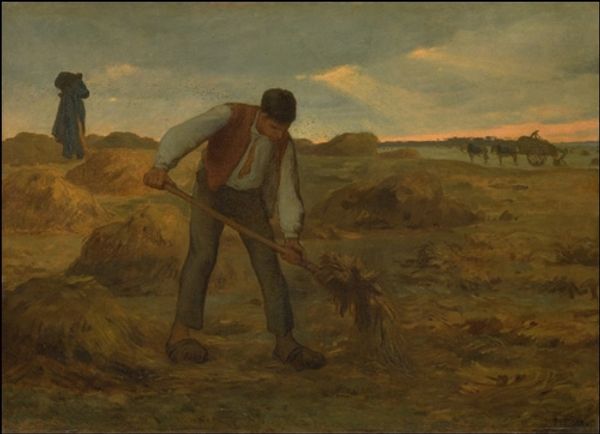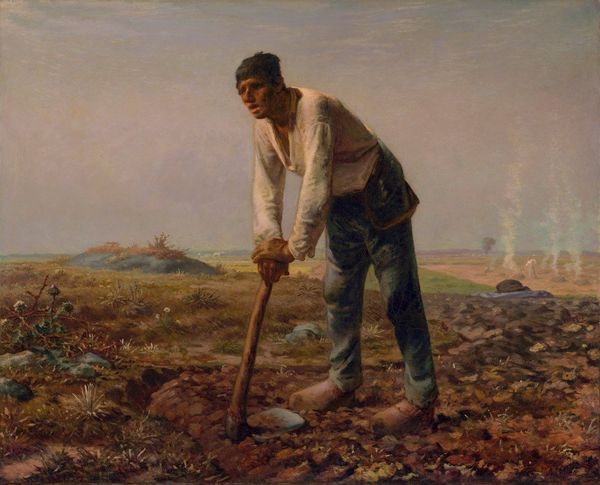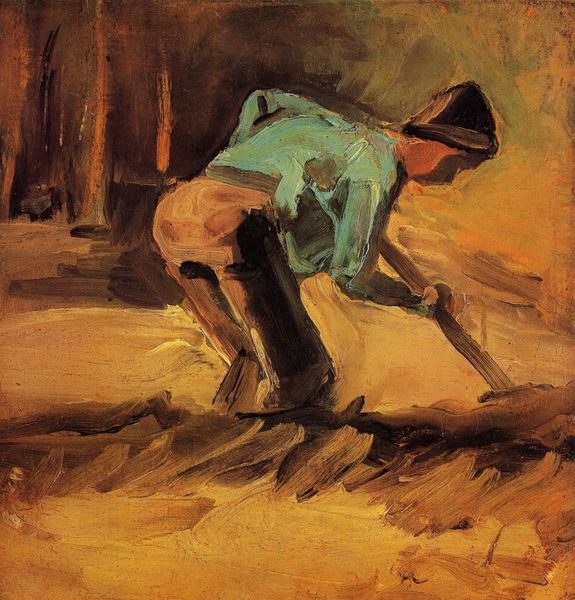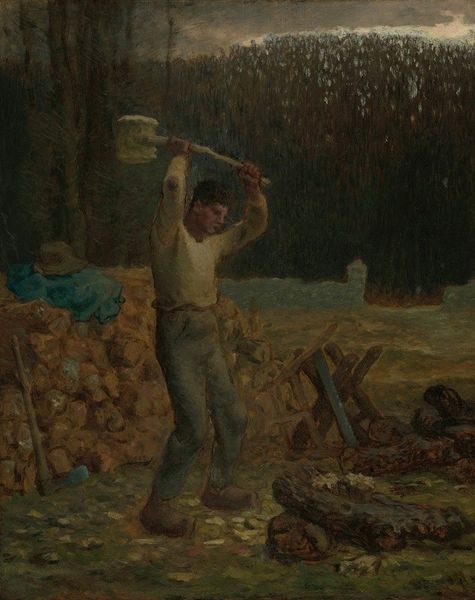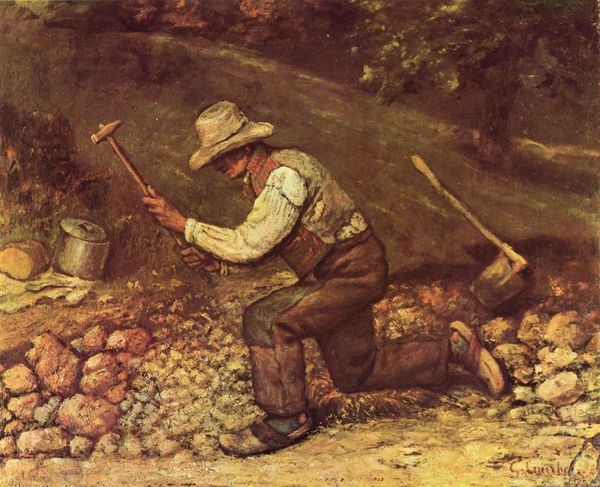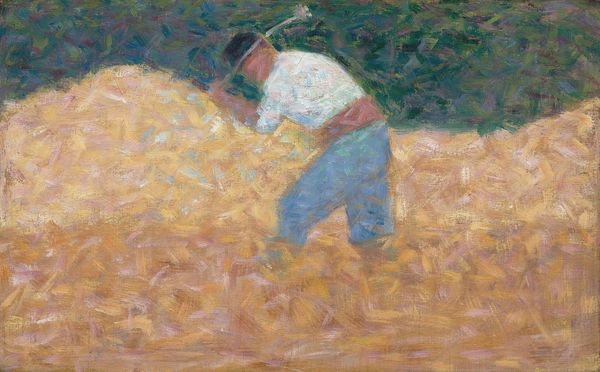
painting, plein-air, oil-paint
#
narrative-art
#
painting
#
impressionism
#
plein-air
#
oil-paint
#
landscape
#
handmade artwork painting
#
oil painting
#
genre-painting
#
post-impressionism
#
modernism
Copyright: Public domain
Curator: "Stone Breaker and Wheelbarrow, Le Raincy," an 1883 oil painting by Georges Seurat, captures a moment of everyday labor with a subtle, almost detached observation. Editor: There's a heavy stillness in this work; the color palette feels muted, as if the very air is thick with dust and fatigue. Curator: Seurat painted this in plein air, emphasizing the landscape's impact on the worker. His early works, even before Pointillism, show this intense study of light and its relationship to color, typical for Impressionism. The social and economic context in 1880s France—a rapidly industrializing society still very reliant on manual labor—frames our understanding. It invites discourse between art and theory by displaying the identity, gender, and politics present. Editor: Right. The lone figure breaking stones represents so many unseen laborers. Look at how his body is positioned—bent, almost broken. It subtly hints at exploitation, doesn't it? Are we, the viewers, complicit in their struggle by consuming the commodities produced at their expense? Curator: These paintings often carry both an idealized pastoral element, rooted in academic traditions of depicting peasant life, and also a subtle, politically charged tension. Editor: Yes, and that tension comes alive because he refrains from overly sentimentalizing or romanticizing labor; this avoids glorification, it simply shows work for what it is – laborious and exhausting. The modern eye also is brought to the environmental impact, breaking rock is detrimental to air and the immediate surroundings, destroying ecosystems. Curator: Consider where this artwork hangs now – The Phillips Collection. Institutions, and their very structures of patronage and presentation, create a filter through which viewers understand what art even is. Editor: Absolutely. Exhibitions implicitly shape conversations around identity, race, and social issues; in museums the stakes are higher, and so, must be thoroughly vetted, accounted for and understood in the historical framework of production and contemporary theory. It becomes about acknowledging systems of power. Curator: Examining art such as "Stone Breaker" challenges us to rethink our preconceived notions regarding the art world, especially the narratives often ignored. Editor: And perhaps most essentially, "Stone Breaker and Wheelbarrow, Le Raincy" serves as an impetus to interrogate our own social responsibilities when confronted by labor exploitation or other types of inequalities that permeate societies.
Comments
No comments
Be the first to comment and join the conversation on the ultimate creative platform.
